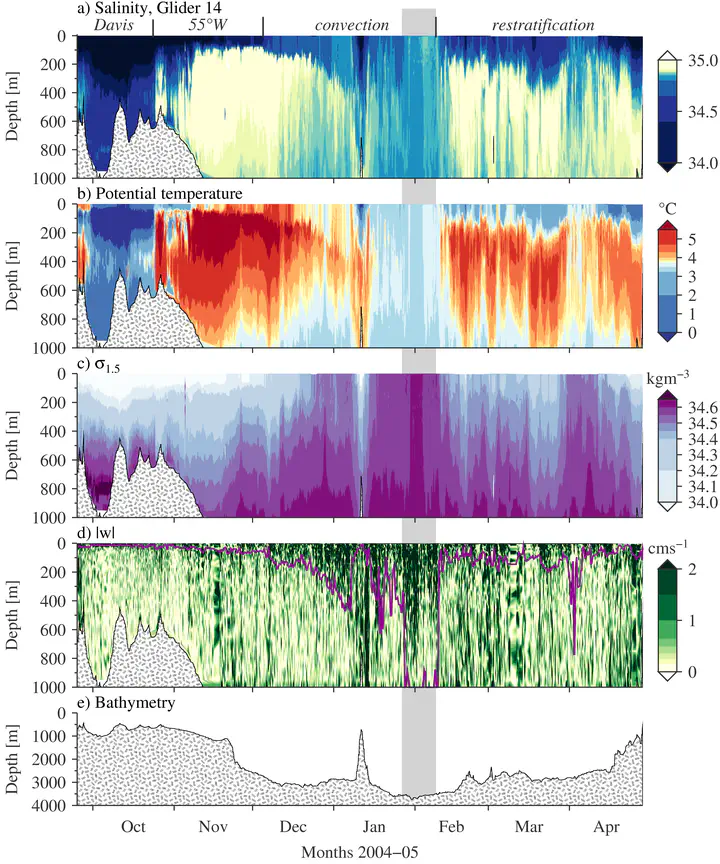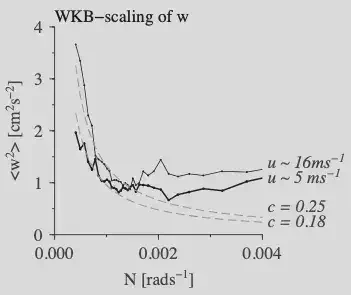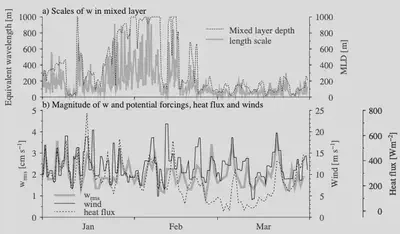The spring phytoplankton bloom and vertical velocities in the stratified and deep convecting Labrador Sea, as observed by Seagliders
 Salinity (a), potential temperature (b) and potential density (σ1.5), and water depth (d) observed by sg014.
Salinity (a), potential temperature (b) and potential density (σ1.5), and water depth (d) observed by sg014.Abstract
The Labrador Sea is a critical region in the world’s ocean: a region where the effects of climate change are seen quickly and strikingly, and where dynamic processes that affect climate change are observed. A recent effect of climate change is the increase of freshwater to high latitudes, as Arctic pack ice and Greenland glaciers melt at accelerating rates. In times of rapid climate change, it is more important than ever to understand the influence these changes have on the status quo of ecosystems and physical processes. The focus of this thesis is to examine the current state of the Labrador Sea biological and physical system through in situ Seaglider and surface satellite observations. The influence of physical processes, including increased freshwater runoff, on the biological system is the subject of chapters 2 and 3. The deep convective process, one of the downwelling branches of the global oceanic overturning circulation is the subject of chapters 4 and 5. Seaglider is capable of making novel measurements of vertical water velocity to better than 1 cm s^{−1} accuracy. Using these measurements along with hydrographic observations, we describe deep convection during the 2004-05 winter. Besides the scientific merits of the results shown here, this thesis also demonstrates the ability of Seaglider to observe bio-optical properties and vertical velocities, two relatively newer observations in the oceanography literature.

